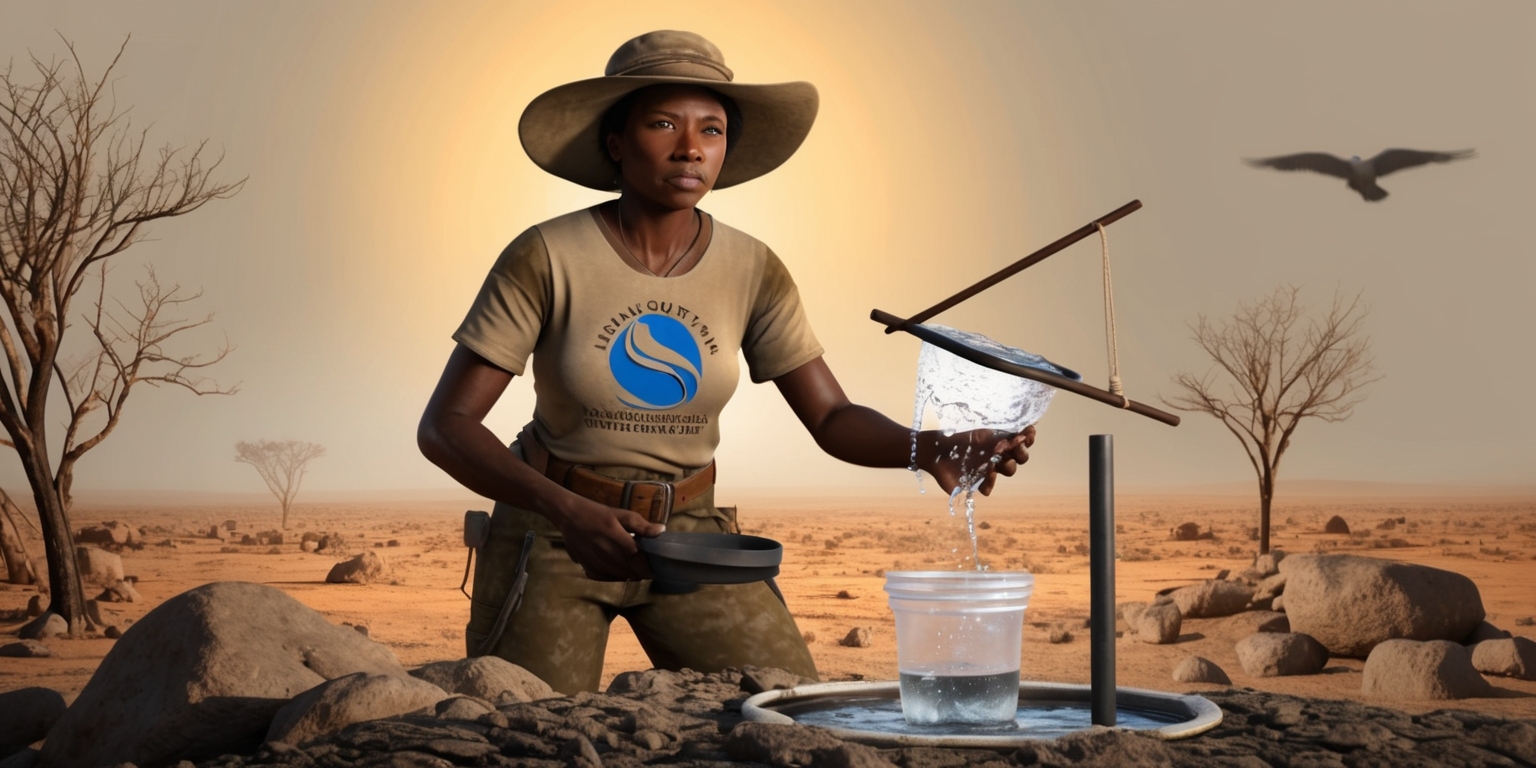Mastering the Thirst for Survival: Strategic Water Collection in Prologue Go Wayback
Oct-09-2025

In the rugged world of Prologue: Go Wayback, hydration is as crucial as any survival tool in your inventory. The challenge of finding water amid a shifting landscape forces players to balance risk with resource management. Whether navigating treacherous terrain or carefully planning each step away from the safety of your cabin, strategic decision-making is key to overcoming dehydration. The game places water at the center of your survival strategy, making its acquisition a fundamental aspect of every journey. Each method available has its trade-offs, offering both immediate benefits and long-term complications. Players must continuously evaluate and adapt their approach as they seek water sources in the ever-changing backdrop of the wilderness.
Survival Through Hydration
The gameplay of Prologue: Go Wayback emphasizes the importance of hydration by making water a non-negotiable resource throughout your expeditions. Though a range of survival tools populate your inventory, water stands apart as a lifeline whose absence quickly turns dire. The game’s mechanics ensure that every foray into the wilderness forces you to consider the fine balance between resource management and exploration. As you stray further from the familiar confines of your cabin, the challenge intensifies, and finding water becomes more than a routine task—it becomes a cornerstone of survival strategy. The careful process of tracking water sources mirrors real-world wilderness navigation, making every sip a small victory Amid a climate of unpredictability and potential hazards.
Navigating the Game's Dynamic Terrain
The game world in Prologue: Go Wayback is built upon constantly changing maps that reward curiosity and strategic planning. In these shifting environments, natural water sources such as rivers are often conveniently close to your starting point, though their exact locations are randomized each playthrough. This dynamic map design means that players must be both observant and flexible, continuously scanning the horizon for promising signs of flowing water. The challenge is not only in discovering these resources but in navigating the terrain safely and responsibly. As you traverse the unpredictable landscape, learning to read environmental cues becomes essential, ensuring that your search for water is both efficient and sustainable across various geographical challenges.
Locating Natural Water Sources
Among the many methods to secure hydration, the discovery of rivers stands out as the most immediate and accessible option. A river, often located within a short distance of your cabin, serves as both a primary water source and an ideal spot for setting up your first camp. However, the path to reaching such watercourses is riddled with challenges due to the randomized map layouts. Players must be patient in their search, knowing that persistence often leads to the rewarding sight of a gently flowing river. This natural source, while invaluable, presents its own risks. Drinking directly from it may have adverse effects that developers have cleverly integrated into the gameplay to Infuse a straightforward process with additional layers of intricacy of quenching your thirst.
Direct Consumption and Its Consequences

One of the riskiest methods for immediate hydration in the game is drinking directly from a river. While the temptation to take a long, refreshing gulp of naturally occurring water is understandable, doing so directly from the source comes with hidden penalties. Standing on mud or snow to access the water may result in a poisoning effect that slowly impacts the character’s overall well-being. This immediate consequence forces the player to weigh the urgency of hydration against the potential long-term drawbacks. It introduces an element of risk management where timing becomes crucial—only resorting to direct consumption when the water meter is at dangerously low levels. This dynamic challenges Consider rephrasing it as: "the player is encouraged to evaluate carefully the optimal moments and techniques to." risk a direct drink from the wild.
Utilizing Container-Based Water Collection
For those who favor a more balanced strategy, container-based water collection offers a strategic alternative to direct consumption. By using a water bottle or jug, players can gather water from the river and carry it with them for future use. This method, although still subject to the consequences of contaminated water, allows for greater mobility and tactical flexibility. It encourages a style of play where preparedness is paramount—filling containers during safe moments allows you to plan your journey without the constant pressure of immediate dehydration. The game incentivizes players to invest in such tools early on, teaching that resource management extends beyond food and clothing to include securing every drop of water needed for survival in a hostile world.
Cabins and Towers as Resource Hubs
Beyond natural sources, the game rewards intrepid explorers with access to man-made structures scattered throughout the wilderness. Cabins and towers serve as pivotal resource hubs, where players can restock on vital hydration items like soda and jugs. These locations are not only crucial for water replenishment but also offer food supplies that ensure your character’s survival. Venturing from one safe haven to another creates an added layer of strategy in which planning your route becomes as important as finding water. By integrating these human-made shelters into the gameplay, Prologue: Go Wayback reinforces the idea that modern conveniences can still play a critical role in a world where nature rules. Careful navigation between these hubs can be a game-changer, especially when natural sources become scarce.
Harnessing Nature's Rainfall
Perhaps the most underrated method of collecting water involves harnessing the unpredictable power of nature—specifically, rainfall. Thunderstorms and intermittent rain showers offer a rare opportunity to collect pure, uncontaminated water. In this scenario, players can strategically leave a water bottle or jug outside, allowing natural precipitation to fill the container gradually. This process bypasses the danger associated with contaminated sources, thereby avoiding any negative effects on your survival metrics. Harnessing rainwater It doesn't merely present a cleaner alternative; it also delivers additional benefits emphasizes the game’s complex environmental interactions. During periods of adverse weather, setting up multiple containers is able to deliver an ample volume of water to sustain your character, enabling you to conserve resources that would otherwise be spent on the dangerous act of direct water consumption from natural streams.
Medical and Environmental Implications
Within the game, the act of collecting and consuming water is laced with subtle yet significant medical and environmental ramifications. The system is finely tuned to simulate the hazards of contaminated water, thereby reinforcing the importance of caution in every survival tactic. As you accumulate water either directly or via containers, it is crucial to consider not only the immediate hydration benefits but also the long-term impacts on your character’s stamina and hunger levels. This dual-penalty system It functions as a continual cue of the elevated state stakes associated with the survival elements of the game. Each decision to consume water directly in the wild carries with it a measured risk which has the power to reshape your journey's trajectory, encapsulating the delicate balance between necessity and caution.
Inventory Management and Resource Allocation
An often overlooked but vital aspect of Prologue: Go Wayback is the challenge of inventory management. The game compels players to grapple with challenging dilemmas as they balance various survival tools with limited carrying capacity. Water occupies a permanent slot in this inventory puzzle, making its acquisition even more significant. Each drop of water collected, whether by container or directly from a river, has to be weighed against other essentials like food, a Walkman, or cooking supplies. This intricate juggling act prompts players to develop strategies that account for both immediate needs and future risks. Effective inventory planning not only helps avoid a dangerous water shortage but also enhances the overall immersive experience by intertwining resource management with survival instincts.
Adapting to Weather Variability
The unpredictable weather system in Prologue: Go Wayback introduces another dynamic layer to the quest for water. Thunderstorms, heavy rains, and periods of plateaued weather all contribute to an evolving strategy that demands adaptability. When anticipating or encountering rain, players can exploit the opportunity to collect fresh water from the sky, a clear advantage over other riskier methods. Conversely, prolonged dry spells or unexpected weather patterns may force the player to rely on natural waterways or available shelters. This atmospheric variability requires constant vigilance and flexibility in your approach to survival. By planning for these environmental changes, you not only maximize your water acquisition strategies but also prepare for other challenges that the ever-shifting climate of the game may present.
Living on the Edge with Strategic Foresight
Prologue: Go Wayback challenges you to live on the edge by intertwining the constant need for water with every other survival strategy. Smart planning and strategic foresight become vital tools as you navigate through hazardous environments. The game requires that you continuously balance the immediate need for hydration with the dangers that come from the sources themselves. Whether you’re forced into direct consumption during moments of dire need or opting for the more calculated approach of container collection, every decision takes on immense importance. This high-stakes dynamic ensures that always having a plan in place for acquiring water is paramount to survival. The pressure of managing hydration amid the stress of unpredictable circumstances tests not only your in-game skills but also your overall strategic mindset.







